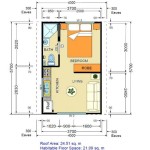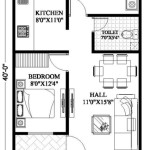Creating a Floor Plan of Your House: A Step-by-Step Guide
Creating a floor plan of your house is a valuable tool for various purposes, such as planning renovations, designing furniture arrangements, and sharing house layouts with family and potential buyers. Here's a comprehensive guide to help you create a floor plan of your house:
Start with Measurements
Begin by accurately measuring the dimensions of each room and the overall house. Use a measuring tape to determine the length, width, and height of all spaces. Note down any irregular shapes or architectural features, such as bay windows or alcoves.
Sketch a Rough Outline
On a large sheet of paper or a digital drawing tool, sketch a rough outline of your house. Divide the space into rooms and mark the location of walls, doors, and windows. Don't worry about being precise at this stage; the focus is on capturing the general layout.
Add Architectural Details
Next, add architectural details to your floor plan. Indicate the location of stairs, fireplaces, built-in cabinets, and any other fixed elements of your house. Use different symbols or line types to distinguish between different elements.
Mark Electrical and Plumbing Fixtures
For a more comprehensive floor plan, include the location of electrical and plumbing fixtures. Mark the position of outlets, light switches, and water taps. This information can be useful for planning electrical wiring and plumbing modifications.
Draw Furniture and Furnishings
If you wish to plan furniture arrangements, draw scaled symbols representing your furniture. Use different colors or patterns to indicate different types of furniture, such as seating, beds, and tables. This will help you visualize how your furniture will fit in the space.
Include Dimensions
For clarity, label the dimensions of each room and the distance between walls, doors, and windows. This information can be helpful for space planning and estimating materials.
Use Software or Online Tools
Consider using home design software or online tools to create a digital floor plan. These tools provide templates, symbols, and drawing aids that can make the process easier and more precise.
Additional Tips
- Take photographs of your house from different angles to help you visualize the layout.
- Use different colors or line thicknesses to distinguish between different elements of your floor plan.
- Keep your floor plan updated as you make changes to your house.
Creating a floor plan of your house requires some effort, but it is a worthwhile investment that can benefit you in multiple ways. Whether you're planning a renovation, rearranging furniture, or selling your property, having a clear and accurate floor plan will make the process smoother and more efficient.

House Plan Free Architecture Design Naksha Images 3d Floor Make My Completed Project Plans Home Duplex

Your Website Title In 2024 Interior Design Work Architecture Floor Plans

Can A Custom Builder Make My Floor Plan Bigger 5 Ways To Add Square Footage Travars Built Homes

House Plans How To Design Your Home Plan

Pin On Casa Charles

Get Floor Plan At 4999 Only 100 Customizable House

Make My House Plan 26 50 Design 1300 Sqft Floor South Facing First

5 Key Areas To Focus On When Designing Your House Floor Plan Amitha Verma Chalk Finish Paint

What Makes A Good Floor Plan

5 Key Areas To Focus On When Designing Your House Floor Plan Amitha Verma Chalk Finish Paint








